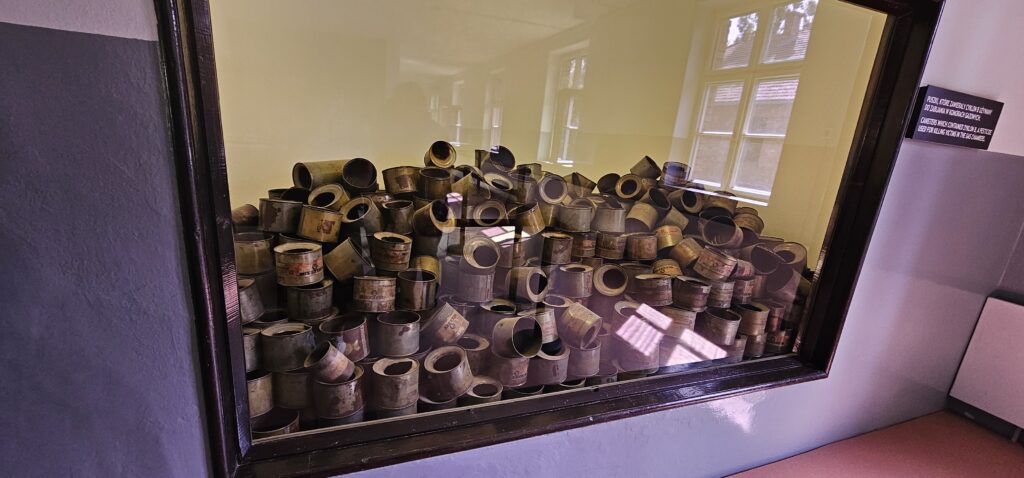From Camp to Memorial
Auschwitz Museum history begins with the liberation of Auschwitz-Birkenau on 27 January 1945. The Red Army found around 7,000 prisoners, many gravely ill and emaciated. In the days and weeks that followed, field hospitals were established on site, and the first documentation of Nazi crimes began. Survivors faced the difficult task of rebuilding their lives or returning to their homelands, while international investigators gathered evidence for future war crimes trials.
You can read more about the liberation of Auschwitz in our dedicated article.
Immediate Aftermath (1945–1946)
In the months after liberation, the site of Auschwitz became both a place of mourning and of investigation. Polish authorities, working alongside former prisoners, recognized the need to preserve the camp as evidence of Nazi crimes. Many buildings still stood, including barracks, gas chambers, and crematoria, offering chilling testimony to what had happened. At the same time, survivors formed committees to care for fellow prisoners and to begin shaping the narrative of remembrance.
Founding of the Auschwitz-Birkenau State Museum (1947)
In 1947, the Polish parliament passed an act establishing the Auschwitz-Birkenau State Museum. This was one of the earliest efforts in Europe to transform a site of atrocity into a permanent memorial. Former prisoners played a crucial role. Tadeusz Wąsowicz, a survivor, became the first director, and Kazimierz Smoleń, another survivor, also guided the institution for decades. Their presence ensured that the museum was not only a place of exhibits, but also of testimony and personal memory.
For more information about its mission and activities, visit the Auschwitz-Birkenau State Museum’s official website.
Early Exhibitions and National Pavilions
In its first years, the museum organized exhibitions using original objects, documents, and photographs left behind. These displays shocked visitors with the scale of Nazi crimes and the everyday reality of camp life. Soon, several nations whose citizens were murdered in Auschwitz created their own national pavilions, adding to the diversity of remembrance and reflecting the international significance of the site.

Auschwitz in Global Memory
By the 1960s and 1970s, Auschwitz had become a symbol of the Holocaust worldwide. Survivors continued to testify, while delegations, political leaders, and educators visited the camp. One of the most significant moments came in June 1979, when Pope John Paul II, himself a Pole who had lived through the war, prayed at Auschwitz. Later that year, the camp was inscribed on the UNESCO World Heritage List, recognizing its “outstanding universal value” as a place of memory and warning.
Education and Commemoration Today
Today, the Auschwitz-Birkenau State Museum is one of the most visited memorial sites in the world, receiving over two million visitors annually. Its mission extends far beyond the preservation of ruins and relics. The museum runs research projects, digital archives, educational programs, and international conferences. It also organizes the annual ceremony marking the anniversary of liberation on 27 January, a date now observed as International Holocaust Remembrance Day.
Further information about those who survived can be found in our article on Auschwitz victims and survivors.
Why Preservation Matters
The history of the Auschwitz Museum shows that memory is not automatic – it must be safeguarded. Survivors were the first to insist that Auschwitz not disappear into ruins, but stand as evidence and as a warning. Over the decades, the site has evolved into a global symbol, reminding humanity of the consequences of hatred, racism, and totalitarianism.
Auschwitz Museum history is therefore not only the story of a place, but also of a responsibility: to remember, to educate, and to prevent such crimes in the future.
